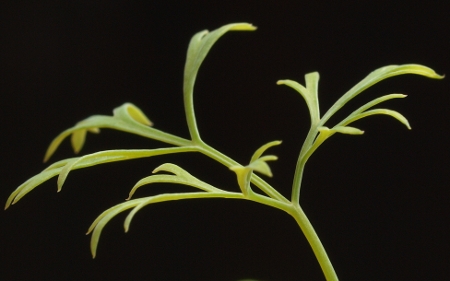It is a known fact that sodium consumption has a bad impact on blood pressure and acts as a risk factor in heart disease, but now new research reveals that the ratio between sodium and potassium in a daily diet is also important: the bigger the gap between the two, the higher the risk of mortality. So, what are you supposed to do? And what does this have to do with pickles?
How much potassium and sodium do you have in your body?
According to a study conducted by American researchers recently published in the Archive of Internal Medicine journal, people who have a large gap in the ratio between sodium and potassium in their diet are at a higher risk for developing heart and blood vessel disease, increasing their risk of mortality, compared to people with a smaller gap between their sodium and potassium intake.

During the study over 2,000 subjects were tested over a period of 15 years, and their consumption of potassium and sodium was compared to the chances of mortality by any reason, and the mortality rate from heart and blood vessel diseases.
A 215% increase in mortality risk
The data showed that an increase of 1000mg in daily sodium consumption was followed with a 20% increase in mortality by any reason. As for potassium consumption, the tendency was reversed: an increase of 1000mg in potassium consumption was accompanied with a 20% decrease in mortality rate.
Among the subjects with the higher gap between potassium and sodium consumption, there was a 46% increase of early mortality for any reason, a 46% increase in risk of heart and blood vessel disease, and a 215% elevated risk of mortality by an Ischemic heart disease.
These results show how important it is to have a well-balanced, well-adjusted diet, even at the mineral level, and that having more potassium in your diet together with less sodium can help fight heart disease. Sodium is a primary component of table salt (sodium-chloride), which exists in most processed foods. Potassium is found in high quantities in leafy and starchy vegetables, as well as fruits. Bananas are known for being rich in potassium, but so are dates, whole grains, pulses and nuts.
But what about pickles?
On one hand, cucumbers are good sources of potassium, with more than 440 mg of potassium in an 8″ cucumber.A similarly sized banana, by comparison, contains nearly 490 mg of potassium. Likewise, dill–a common herb used in pickles–is rich in potassium, with one tablespoon of dried dill weed containing over 100 mg of this important mineral. On the other hand, pickles are high in sodium; a medium-sized pickle contains over 780 mg of it.
The recommended consumption of potassium for adults is 4700mg a day. Meanwhile, the recommended amount of sodium consumption is only a third of that amount. Unfortunately, western diets typically reverse this with high sodium consumption and low intake of potassium. Recently, because its consumption levels are so low, potassium has been recognized as a mineral of public concern.
Sodium is a known risk factor for high blood pressure: a meaningful risk factor in heart attacks, strokes and kidney disease. Research even shows that the potassium-sodium ratio generally corresponds to blood pressure levels, even more so than the consumption of each mineral on its own.
The consumption of potassium and sodium has a reverse effect on blood vessels; potassium consumption can moderate blood pressure caused by high consumption of sodium. It is also possible that a low potassium-sodium ratio is a marker for high consumption of plant foods and lower consumption of processed foods.
How do you consume less sodium and more potassium?
- The basic foods we consume on a daily basis have a high influence on our consumption of sodium. Read the nutritional facts and make a conscious decision to buy bread, cereal and cheese that are low in sodium.
- In general, consume more fruits and vegetables that are rich in potassium, in particular: dill, parsley, coriander, spinach, basil, fennel, arugula, artichoke and kohlrabi.
- Prefer starchy vegetables rich with potassium over processed cereals. For example choose sweet and regular potatoes, preferably with the skin left on.
- Add fruits and other foods rich with potassium like bananas, dates and avocado to your diet. Dates are especially rich in potassium and low in sodium. Choose these rather than processed sweets, snacks and white-flour cookies.
- “Neutralize” the high sodium content of meals based on processed foods, microwave dinners or fast foods by adding vegetables or fruits to the meal.
Salt is salt. Rock salt comes from long-vanished oceans – the Himalayans were formed by India moving from the Antarctic Ocean and smashing into the Eurasian land mass.
I have high blood pressure and always carry potassium supplements when I am dining out and have no control over the salt content.
Thanks for the information about the 1:1 ratio being optimal. One of my favorite mid-meal snacks are Wasabi-Soy Almonds from Blue Diamond (sometimes available at Costco). I was worried that they would have too much salt/sodium. I just checked and the Potassium:Sodium ratio is 180:115. Yea! I had read recommendations to eat raw almonds. Blech!
Hi, pamla. Himalayan rock salt is still high in sodium, but it provides a better balance with other minerals; it is believed that this balance may help the body deal better with the sodium. However, it is still recommended not to overdo. Sea salt could theoretically be similar, but there are too many products that do not provide anything special over processed table salt.
how mucn safer is Himalayan rock salt compared to standard sea salt